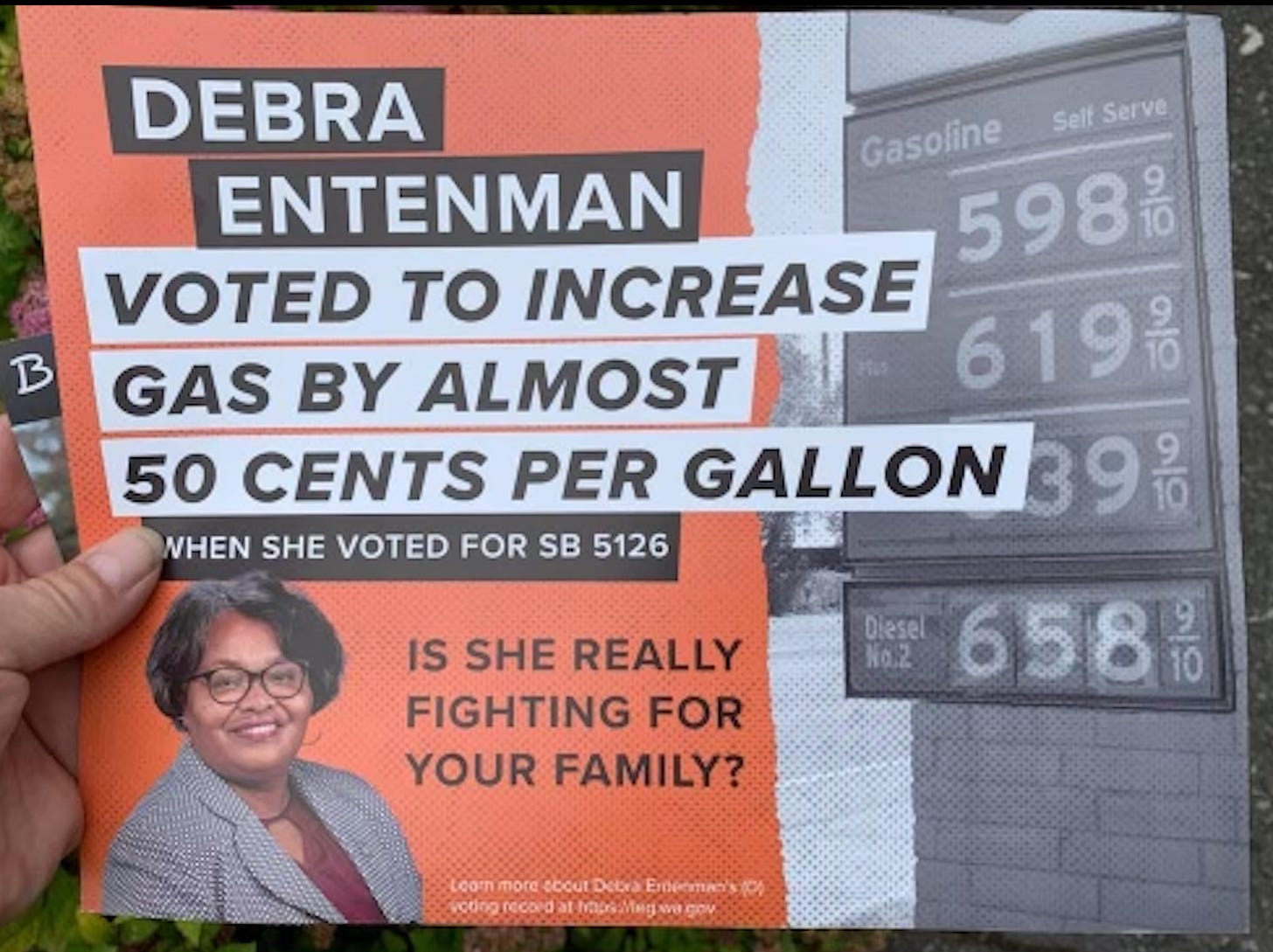Here’s a fun stat: Political action committees have spent more than $2 million opposing candidates for the Washington Legislature ahead of Tuesday’s primary. That’s on top of more than $10 million spent by the candidates themselves. Add in another million or so for the statewide Secretary of State’s race, more than $15 million for the U.S. Senate race, and something in the $15 million range for the various U.S. House races, and we’re talking real money.
That means a whole bunch of consultants, television and radio stations, mailing houses and online advertising platforms are making serious bank this summer.
The overwhelming majority of that money has been spent in just a handful of competitive races. If you live in one of those districts you’re likely being inundated with things like this mailer blaming incumbent Rep. Debra Entenman, D-Kent, for high gas prices.1
As we noted a while back, the heaviest spending has been by Republicans in tight races for the state Senate. Of the top 10 targets of independent spending, eight are Democratic candidates for the Senate. Only one, Kent City Council Member Satwinder Kaur, has a legit primary opponent of her own party. So all this spending is aimed at softening political beachheads by making Democrats look vulnerable headed into November.
Democrats are spending heavily as well. On Saturday alone, New Direction PAC, which works to defend Democratic majorities in the Legislature, reported spending nearly $100,000 on late tactics in several races. Its biggest move was a $21K mailer opposing Rep. Jesse Young, R-Gig Harbor, who’s trying to oust Sen. Emily Randall, D-Bremerton, in the 26th District. Randall is considered among the most vulnerable Democrats this year; New Direction has spent nearly $160K on the race thus far, mostly highlighting the stark difference between the two candidates on abortion rights.
The 26th isn’t one of the handful of races featuring a real primary in the sense that a viable candidate is going to finish out of the money. But that doesn’t mean the primary result isn’t important. For a two-person race, a primary is basically a poll with a giant sample and a tiny margin of error. So the results will be signposts as to whether voters are as fired up about inflation, $5 gasoline, homelessness, and crime as they are widely believed to be. And that will give politicians, operatives, and donors a better sense of where the political threats and opportunities lie.
So here’s a spin around the state to look at interesting primary races, both real and symbolic:
Keep reading with a 7-day free trial
Subscribe to The Washington Observer to keep reading this post and get 7 days of free access to the full post archives.




